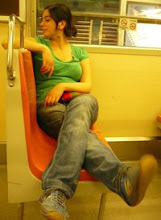
We need to star addressing that debates are very important tools to express our point of view with deep arguments. Having experienced our debates last week for the first time, I would say these were very interesting. Both debates pointed out attractive topics to reflect on. The first debate about “Professionals as teachers in schools” was highly well prepared and extremely excited at the same time. Both groups had good arguments and clear ideas. The team in favor of professionals in schools showed good management of the topic and presented some important facts. Nevertheless, the team against the topic made a high quality debate. Even though they did not have some many facts, they made an important contribution from the ethic point of view of education. Moreover, this group showed clear arguments and more passion defending education without professionals in charge and they presented important quotations from important educators.
On the other hand, referring to the second debate about “Voluntary Vote”, it was a mayor mistake. It was completed unbelievable to see both groups defending the same topic instead of one of them arguing against. However, this debate was interesting because the audience could interact and participate. According to improve, I would say that the in favor side could improve being a little bit more tolerant and more passionate. The second group against should improve looking for more facts and statistics. Referring to the team in favor of voluntary vote, they should improve their arguments being more secure and less nervous. Besides, they could have found more facts to give more support to their topic. In order to say which group won I would definitely say the team against Professionals teaching in school, for the main reason as I said before that they tried to make an important contribution from the ethic point of view of education. It does not matter if they did not have statistics or power points, but the team seemed to be clearly sure what they were discussed. Finally, I wanted to say many things at the end, but the time wasn’t enough.
On the other hand, referring to the second debate about “Voluntary Vote”, it was a mayor mistake. It was completed unbelievable to see both groups defending the same topic instead of one of them arguing against. However, this debate was interesting because the audience could interact and participate. According to improve, I would say that the in favor side could improve being a little bit more tolerant and more passionate. The second group against should improve looking for more facts and statistics. Referring to the team in favor of voluntary vote, they should improve their arguments being more secure and less nervous. Besides, they could have found more facts to give more support to their topic. In order to say which group won I would definitely say the team against Professionals teaching in school, for the main reason as I said before that they tried to make an important contribution from the ethic point of view of education. It does not matter if they did not have statistics or power points, but the team seemed to be clearly sure what they were discussed. Finally, I wanted to say many things at the end, but the time wasn’t enough.
